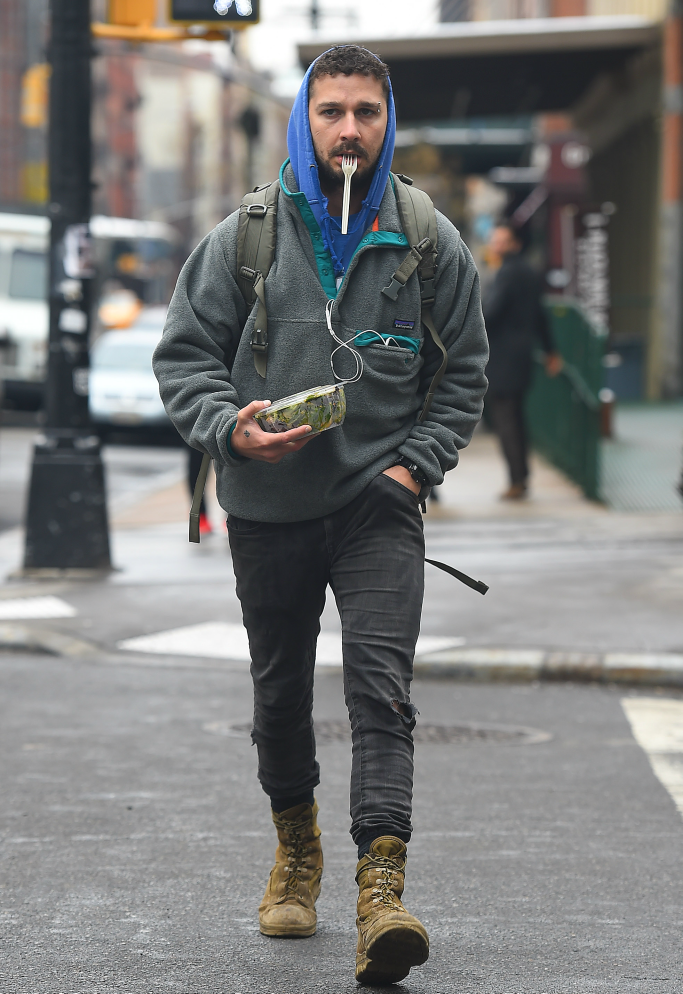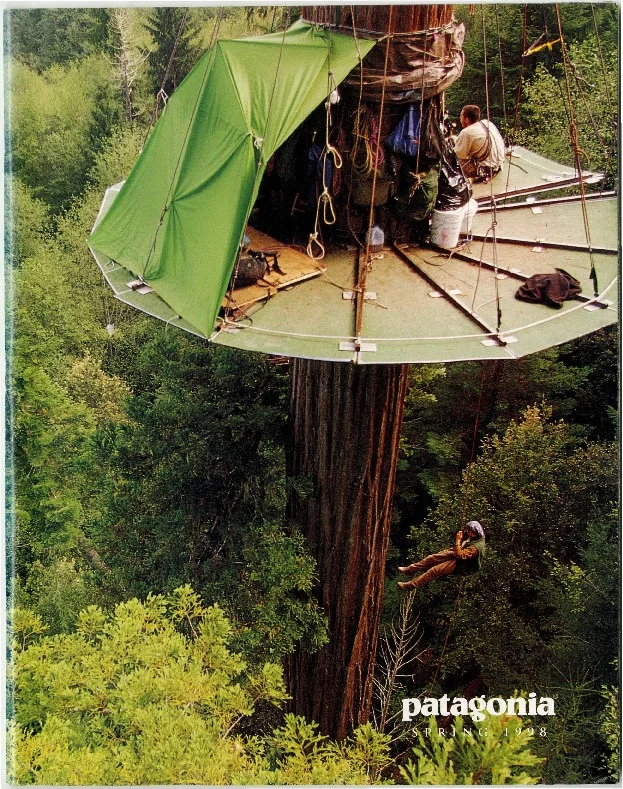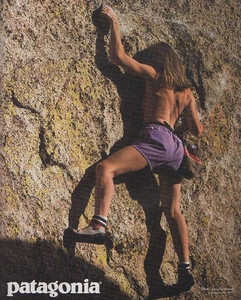ICONS: PATAGONIA
- Santeri Horst
- Mar 15, 2023
- 7 min read

This outdoor brand is the youngest of the bunch that we’ve and will cover on our Icons series. Despite its age it's maybe bigger or at least more influential than its older counter partners. It's a brand with a strong identity and mission. From the center of this brand, you will find a small group of visionaries, like our pal Yvon Chouinard an outdoorsman and a true legend, born in 1938. He is the main culprit of our story when we take a deep dive into the one of the most environmentally on point outdoor brand in history, Patagonia.

Yvon’s dad, Gerard, was a French-Canadian jack of all trades. He was a skillful man who did everything from plumbing to plastering and even carpentry. All in all his dad was a man of great work ethic. This was also something Yvon took up during his adolescence. Love for the adventures and nature Yvon inherited from his mother, Yvonne. Chouinard family moved to west coast in 1946, they auctioned most of their possessions and ended up on Burbank, California.
In 1953, after moving to the west, 14-year-old Yvon had joined to the Southern California Falconry Club, where he trained hawks and falcons for hunting. In this said Falconry Club, Yvon’s love for climbing blossomed, when one of the club leaders taught the boys how to rappel down the cliffs to the falcon aeries. Young Yvon and his mates went all in this new sport of going up and down the cliffs. They started hopping freight trains to the west end of the San Fernando Valley, to the sandstone cliffs of Stoney Point.

Yvon began hanging out at Stoney Point on every weekend in the winter and go to the Tahquitz Rock in the fall and spring. In the later mentioned spot he met his future business partner, Tom Frost, among other climbers form the Sierra Club. Nothing was enough for these young rascals, and they moved from Tahquitz to Yosemite to learn to climb even bigger walls.

Yvon’s handyman genes kicked in first time around 1957. This came purely from necessity, because boys needed tons of pitons – sharp metal spikes made to be hammered into rock faces as climbing aids. To keep climbing up these big walls of the North Face, Yvon started making his own steel pitons. He went to a junkyard and bought a used coal-fired forge, a 60kg anvil, some tongs and hammers, and begun following his dad’s footsteps and learning how to blacksmith. As a resourceful young man, it didn’t take too long before Yvon and his pitons were in business. He was able to forge two pitons in an hour, which he then sold for $1.50 a pop.

Yvon run a small piton shop in his parents’ backyard in Burbank. His blacksmith setup was quite portable which gave him opportunity to pack them up in his car and go surfing Bing Sur and then after waves, make few pitons on the beach. Not bad life for a young twenty-year-old.
During his early twenties Yvon traveled a lot, between Yosemite, Canada, Alps and Wyoming. He made his way by selling his gear from the back of his car. Dude wasn’t making a fortune but keeping the lifestyle afloat.

In Yosemite, Yvon and his mates were called the Valley Cong. They had to hide from the rangers because they had overstayed their camping limit. The gang took great pride and joy in fact that climbing rocks had no economic value whatsoever.

In 1964, Yvon got together with his pal Tom Frost, an aeronautical engineer, and formed a company called Chouinard Equipment. Together they specialized in pitons and during their 9-year partnership they revolutionized and redesigned almost every climbing tool in order to make them better.

By the 1970’s, our boys were doing some serious bank and they had become one of the biggest climbing gear suppliers in the US. By that time Yvon also had realized the cost of his industry to the environment where they were used. Their pitons had harmful long-term effects to the rock surfaces, filling them with holes and causing them to split. Pitons formed majority of their business and guess what Yvon decided to do, after his realization?! He pulls out of that business and perfects the solution which would later invade the market. Yvon created lightweight aluminum chocks that could be put into the existing cracks in rock and easily removed after. Chocks were launched in 1972, in first Chouinard Equipment catalog. In the beginning of the catalog was a thorough 14-page editorial piece by the climber Doug Robinson on how to use chocks. The editorial opened with a strong message:
‘There is a word for it, and the word is clean. Climbing with only nuts and runners for protection is clean climbing. Clean because the rock is left unaltered by the passing climber. Clean because nothing is hammered into the rock and then hammered back out, leaving the rock scarred and the next climber's experience less natural. Clean because the climber's protection leaves little trace of his ascension. Clean is climbing the rock without changing it, a step closer to organic climbing for the natural man. ‘

FROM HARDWARE TO SOFT GEAR

In the late 60’s the basic Yosemite climbers look would consist of the tan cut-off chinos and white dress shirt bought form the thrift store. Collared shirt kept the hardware slings from cutting into the neck. In 1970, Yvon went on a climbing trip to Scotland and brought a rugby shirt home with him to wear rock climbing. Yvon, as a well know trendsetter, made his friends and fellow climbers jealous of his new colorful climbing shirt. So, Yvon’s business sense hit in, and he ordered rugby shirts from Umbro, in England. Shirts were an instant hit and sold out straight away. So, in order to stay up with the demand he began ordering shirts from New Zealand and Argentina to keep his customers happy.
By 1972 the company was selling heaps of different clothing gear for climbers and as the clothing line kept growing fellas had to come up with a name for it. Yvon didn’t want the clothing line to be mixed up with the hardware stuff and he didn’t want to limit his audience to only mountain climbers. So, he came up with a name Patagonia.

Finally in 1973 the Patagonia company was established in meatpacking factory in Ventura, California. Patagonia’s name comes from the mountain region in South America, which consists of the southern section of the Andes mountains. The company logo is the wavering peaks of Monte Fitz Roy, which is one of the toughest mountains to climb, although our man Yvon conquered it back in 1968.
Back in the 1970’s mountaineering as well as most sports was relied on the traditional, materials such as cotton, wool and down, when it comes to clothing. In order to revolutionize the status quo Patagonia tried to find inspiration from new places and fields. Eventually they found out that the synthetic pile sweater worn by the North Atlantic fishermen was perfect garments for climbing, thanks to its insulating and moisture absorbing abilities. This invention was then later launched as a Pile Fleece jacket, in 1977 which put Patagonia on the map.
During the 1980’s Patagonia explored and invested on more sustainable materials and production methods. One of those new materials were Synchilla which was a result of Yvon’s need to create an alterative material to wool. Then in 1985 Patagonia introduced the non-pilling Synchilla Snap-T Fleece pullover. 80’s was also the time when Patagonia initially made the switch to their bright colors; cobalt, teal, French red, aloe, seafoam and iced mocha, that they still rock today. That was also something rather unusual in the outdoor industry, where were usually only tan, forest green and other earthly tones.
In all and all Patagonia was on a roll during the 80’s their colors and the growing demand for technical materials was all good for the business. They were even mentioned in Inc. Zine’s list of fastest growing privately owned companies. Patagonia’s strength wasn’t only the products but the company transparency and the way they informed their customers about what they’re buying into. Yvon’s companies have raised awareness for environmental issues since day one, and since 1986 Patagonia has even donated 10% of its profits to grassroots organizations.
Patagonia didn’t just redefine climbing gear and outdoor clothing they were also and still are amazing with their messaging. Patagonia knew who their customers were – adventurers. So, they established these catalogs with every season with pretty gnarly photos. Pics by outdoor photographers like Galen Rowell and Corey Rich. Our man Yvon has even stated, ‘We were the first to use real people, and captions saying who and where they were,’ to The New Yorker in 2016. On top of that they have a golden principle when curating the catalogs: 50% of the editorial content should be devoted to pics and stories of adventures of their customers and ambassadors.
All that growth wasn’t free, and it came to a halt in summer of 1991, thanks to recession. Patagonia had to lay off 20% of their employees and they almost had to sell the company. That taught Yvon that they had to keep growth to a modest level in the future, so they don’t need to fire their friends. 90’s in general were interesting times for the company, by 1996 they had switched from regular cotton to organic in all their cotton products. Since the 90’s Patagonia has continued to innovate better and more sustainable solutions for outdoors. In 2011, they launched the ’Common Threads’ program in which they aim to make all their rigs repairable and recyclable. They’ve even began to offer free repairs on all their products, which is fucken rad!

Since Yvon started Patagonia, they’ve spent decades perfecting their products. They are a company that keeps on researching different materials, colors, working methods in order to make our planet slightly better. These products are something they’re proud of and ones that passively promote a safer environment. Without a doubt Patagonia is one of the worlds leading environmentally friendly clothing brands, and oh yes, we’re so stoked that now first time ever we’ve a humongous stack of Patagonia fleeces available in store.

Interested and want to know more? Head down to www.patagonia.com






























Comments